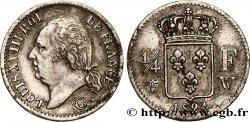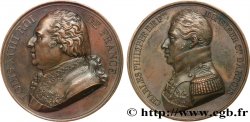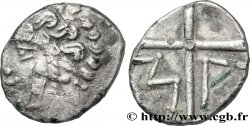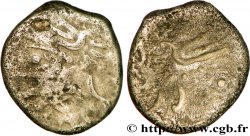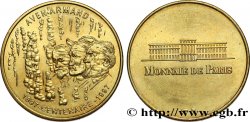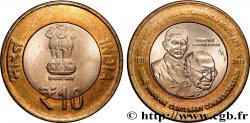Live auction - fme_888640 - LUIGI XVIII Médaille, Général La Fayette
Devi Sign-in ed essere un offerente approvato fare un'offerta, Login per fare offerte. Conti sono soggetti ad approvazione e di approvazione sono raggiunti entro 48 ore. Non aspettare fino al giorno di una vendita si chiude per registrarti.Confermando la tua offerta su questo oggetto ti impegni ad un contratto legalmente vincolante per l'acquisto di questo prodotto e fare clic su «offerta» costituisce accettazione dei termini di utilizzo de live auctions cgb.fr.
Offerta deve essere collocato in euro gli importi interi vendita only.The si chiuderà al momento sulla descrizione dell'oggetto, eventuali offerte pervenute al sito dopo l'orario di chiusura non verranno eseguite. Volte transmition possono variare e le offerte potrebbero essere respinto se si attende per gli ultimi secondi. Per ulteriori informazioni ckeck le FAQ Live auction.
Le offerte vincenti saranno sottomesse ai 18% per spese di compartecipazione alla vendita.
Le offerte vincenti saranno sottomesse ai 18% per spese di compartecipazione alla vendita.
| Valutazione : | 150 € |
| Prezzo : | 101 € |
| Offerta maxima : | 101 € |
| Data di fine vendita : | 13 febbraio 2024 16:48:43 |
| partecipanti : | 2 partecipanti |
Tipo : Médaille, Général La Fayette
Data: 1824
Metallo : rame
Diametro : 46,5 mm
Asse di coniazione : 12 h.
Incisore CAUNOIS François Augustin (1787-1859)
Peso : 47,61 g.
Orlo : lisse
Marchio : sans poinçon
Commenti sullo stato di conservazione:
Très belle patine marron hétérogène, légèrement irisée au revers. Très légère usure sur certains hauts reliefs de l’avers. Des rayures sur la tranche
N° nelle opere di riferimento :
Diritto
Titolatura diritto : GENERAL - LAFAYETTE.
Descrittivo diritto : Buste du général La Fayette, en habit, à droite ; sur la tranche de l’épaule .1824. ; au-dessous signature CAUNOIS FRENCH..
Rovescio
Titolatura rovescio : THE DEFENDER / OF AMERICAN AND / FRENCH LIBERTY. / 1777-1824. / BORN IN CHAVANIAC, / THE 6 SEPTEMBER, / 1757..
Descrittivo rovescio : Couronne de chêne, inscription au centre en sept lignes.
Commento
Cette médaille a certainement été réalisée pour les États-Unis ; elle existe aussi en bronze doré ou en bronze argenté et en or.
Cette médaille commémore le voyage de La Fayette aux États-Unis le 13 juillet 1824. Collignon (La médaille au XIXe siècle et l’histoire) décrit ainsi ce voyage “Après avoir fait un triomphal accueil à Lafayette, qui était allé revoir le théâtre des exploits de sa jeunesse, le Congrès des États-Unis avait voté une résolution où il appelait Lafayette le champion de la liberté, le héros de la Révolution, l’ami et le compagnon de Washington, et il avait envoyé un navire de guerre le chercher en France. Le Vice-Président vint le recevoir à New-York. Il fut traité dans toutes les cités américaines avec les mêmes honneurs que s’il eut été le président d’une République Française. Les récits émouvants qui arrivaient d’Amérique apportèrent aux libéraux français une consolation, un encouragement et une espérance”. Lafayette effectue ce voyage avec son fils prénommé Georges Washington, 182 villes sont visitées entre 1824 et 1825. Le Congrès le remercie en lui faisant un don de 200.000 dollars (en récompense de l’argent qu’il avait avancé personnellement pour aider la Révolution américaine) et 12.000 hectares de terres en Floride. Il fut le premier étranger à s'adresser aux deux Chambres réunies du Congrès américain et son portrait figure dans la Chambre des Représentants. Il a été élevé à titre posthume, «citoyen d'honneur des États-Unis d'Amérique», un privilège rare qui n’a été accordé qu'à quatre reprises dans l'Histoire américaine.
This medal was certainly made for the United States; it also exists in gilded bronze or silvered bronze and gold.
This medal commemorates Lafayette's trip to the United States on July 13, 1824. Collignon (The Medal in the 19th Century and History) describes this journey as follows: “After giving a triumphant welcome to Lafayette, who had gone to revisit the scene of the exploits of his youth, the United States Congress had voted a resolution in which it called Lafayette the champion of liberty, the hero of the Revolution, the friend and companion of Washington, and it had sent a warship to fetch him from France.. The Vice President came to receive him in New York. He was treated in all American cities with the same honors as if he had been the president of a French Republic.. The moving stories that arrived from America brought consolation, encouragement and hope to the French liberals.. Lafayette made this trip with his son, George Washington, and visited 182 cities between 1824 and 1825.. Congress thanks him with a donation of 200. 000 dollars (as a reward for the money he had personally advanced to aid the American Revolution) and 12. 000 hectares of land in Florida. He was the first foreigner to address both houses of the United States Congress together, and his portrait appears in the House of Representatives.. He was posthumously made an \\\"honorary citizen of the United States of America,\\\" a rare privilege granted only four times in American history.
Cette médaille commémore le voyage de La Fayette aux États-Unis le 13 juillet 1824. Collignon (La médaille au XIXe siècle et l’histoire) décrit ainsi ce voyage “Après avoir fait un triomphal accueil à Lafayette, qui était allé revoir le théâtre des exploits de sa jeunesse, le Congrès des États-Unis avait voté une résolution où il appelait Lafayette le champion de la liberté, le héros de la Révolution, l’ami et le compagnon de Washington, et il avait envoyé un navire de guerre le chercher en France. Le Vice-Président vint le recevoir à New-York. Il fut traité dans toutes les cités américaines avec les mêmes honneurs que s’il eut été le président d’une République Française. Les récits émouvants qui arrivaient d’Amérique apportèrent aux libéraux français une consolation, un encouragement et une espérance”. Lafayette effectue ce voyage avec son fils prénommé Georges Washington, 182 villes sont visitées entre 1824 et 1825. Le Congrès le remercie en lui faisant un don de 200.000 dollars (en récompense de l’argent qu’il avait avancé personnellement pour aider la Révolution américaine) et 12.000 hectares de terres en Floride. Il fut le premier étranger à s'adresser aux deux Chambres réunies du Congrès américain et son portrait figure dans la Chambre des Représentants. Il a été élevé à titre posthume, «citoyen d'honneur des États-Unis d'Amérique», un privilège rare qui n’a été accordé qu'à quatre reprises dans l'Histoire américaine.
This medal was certainly made for the United States; it also exists in gilded bronze or silvered bronze and gold.
This medal commemorates Lafayette's trip to the United States on July 13, 1824. Collignon (The Medal in the 19th Century and History) describes this journey as follows: “After giving a triumphant welcome to Lafayette, who had gone to revisit the scene of the exploits of his youth, the United States Congress had voted a resolution in which it called Lafayette the champion of liberty, the hero of the Revolution, the friend and companion of Washington, and it had sent a warship to fetch him from France.. The Vice President came to receive him in New York. He was treated in all American cities with the same honors as if he had been the president of a French Republic.. The moving stories that arrived from America brought consolation, encouragement and hope to the French liberals.. Lafayette made this trip with his son, George Washington, and visited 182 cities between 1824 and 1825.. Congress thanks him with a donation of 200. 000 dollars (as a reward for the money he had personally advanced to aid the American Revolution) and 12. 000 hectares of land in Florida. He was the first foreigner to address both houses of the United States Congress together, and his portrait appears in the House of Representatives.. He was posthumously made an \\\"honorary citizen of the United States of America,\\\" a rare privilege granted only four times in American history.







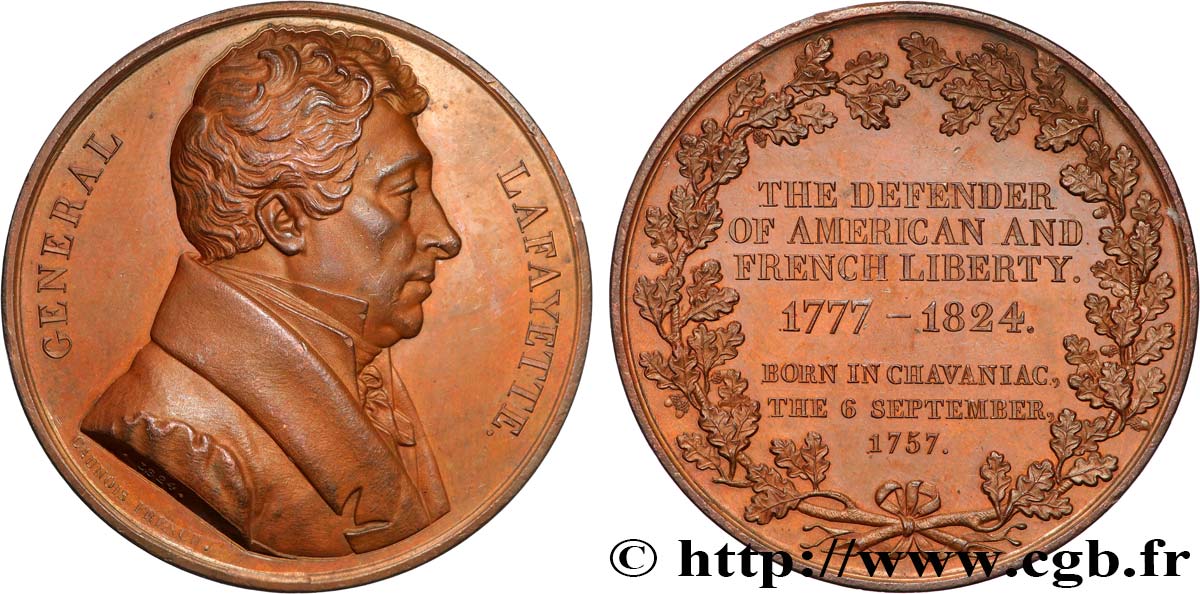
 Segnalare un errore
Segnalare un errore Stampate la pagina
Stampate la pagina Condividi mia selezione
Condividi mia selezione Fai una domanda
Fai una domanda Consegnare / vendere
Consegnare / vendere
 Descrittivo
Descrittivo


